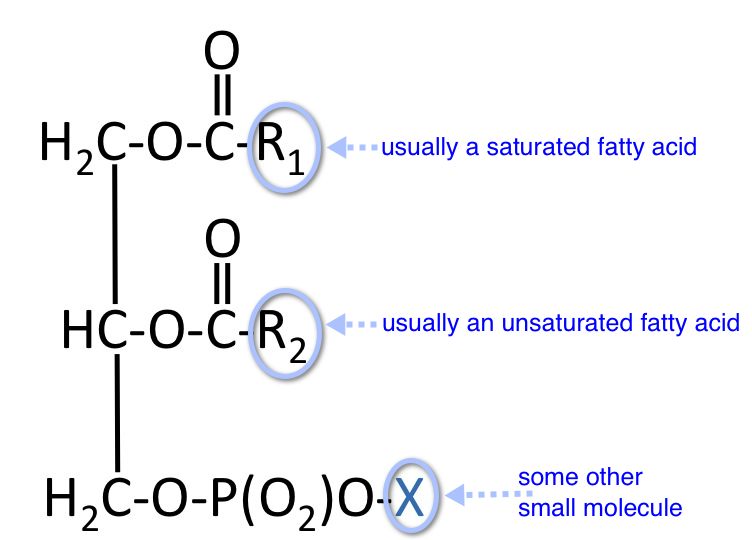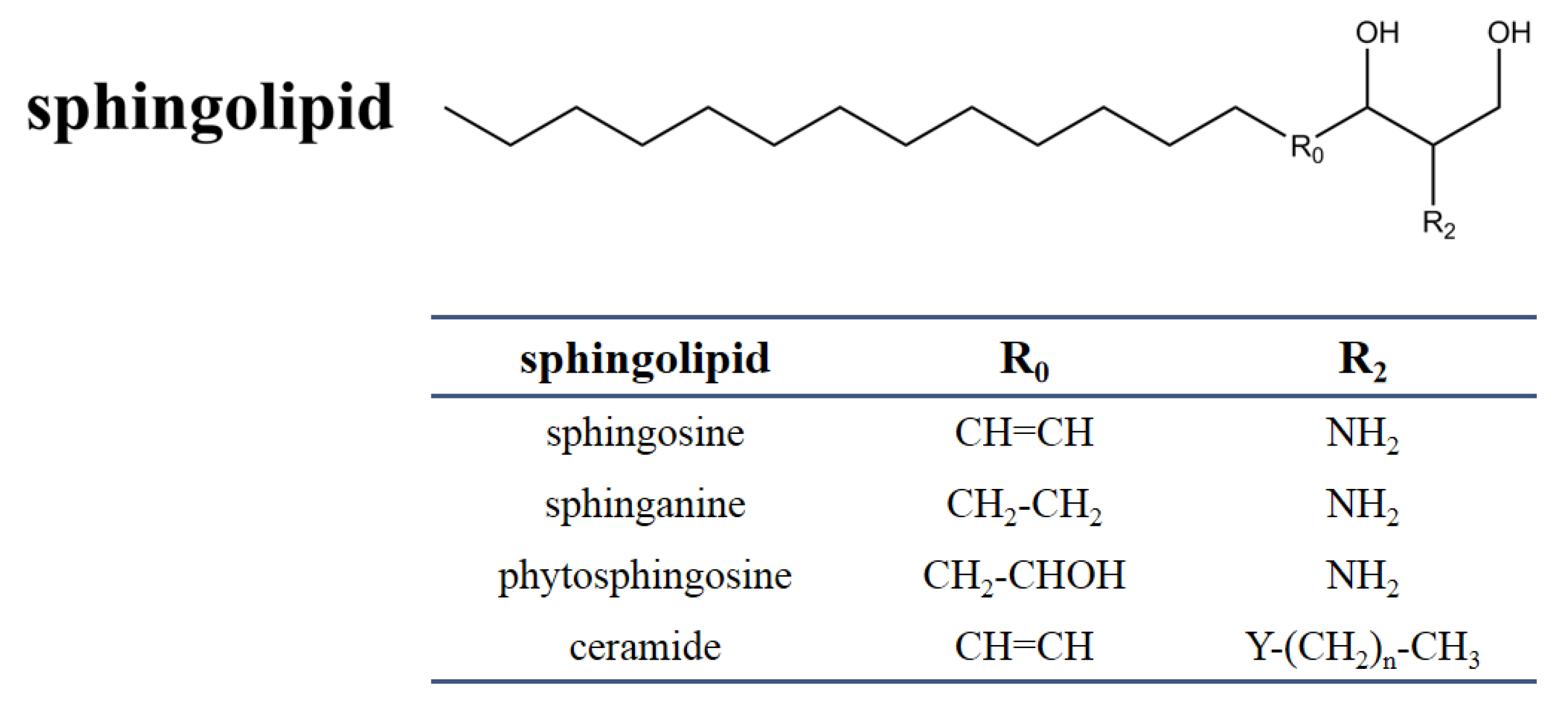Introduction to Membrane Lipids
Introduction to Membrane Lipids
:max_bytes(150000):strip_icc()/cell-membrane-373364_final-5b5f300546e0fb008271ce52.png)
Glycerophospholipids
Glycerophospholipids are a class of lipids that form a major component of all cell membranes. They can form lipid bilayers because of their amphiphilic characteristic. The molecules have a hydrophilic 'head' and hydrophobic 'tails'. The hydrophobic tails are fatty acid chains, and the hydrophilic head contains a phosphate group. This structure allows them to form bilayers that can assemble into different shapes and sizes, playing crucial roles in cellular function.

General Structure
A glycerophospholipid molecule consists of:
- Glycerol Backbone: A three-carbon molecule.
- Fatty Acid Tails: Usually two fatty acids attached via ester linkages to the first and second carbons of glycerol.
- One fatty acid is typically saturated.
- One fatty acid is typically unsaturated.
- Phosphate Group Head: Attached to the third carbon of glycerol. This can further link to various substituents (X) giving rise to different types of glycerophospholipids.
Fatty Acids: Solubility and Melting Point
- Solubility: Decreases as the chain length increases.
- Melting Point:
- Increases with chain length.
- Decreases with number of double bonds.
Natural fats at 25°C: - Olive oil: liquid - Butter: soft solid - Beef fat: hard solid

Specific Examples of Fatty Acids
- Saturated Fatty Acid: e.g., palmitic acid (C16:0)
- Unsaturated Fatty Acid: e.g., oleic acid (C18:1)

Phosphatidylinositol 4,5-bisphosphate (PIP2) in Signal Transduction
Phosphatidylinositol 4,5-bisphosphate [PI(4,5)P2] is a minor component of cell membranes but plays a key role in signaling.
- In response to a signal, it can be cleaved by phospholipase C (PLC) to produce inositol 1,4,5-trisphosphate (IP3) and diacylglycerol (DAG).
- IP3: Binds to IP3 receptors on the endoplasmic reticulum, causing release of Ca2+ into the cytoplasm.
- DAG: Remains in the membrane, acting as a second messenger to activate protein kinase C (PKC).

Sphingolipids
Sphingolipids are a class of lipids containing a backbone of sphingoid bases, which are amino alcohols with long hydrocarbon chains.
Types of Sphingolipids
- Ceramide: The simplest sphingolipid with H as a head group.
- Sphingomyelin: The only phosphosphingolipid, with phosphocholine as the head group.
- Glycosphingolipids: These are classified based on the mono- or oligosaccharide head groups.
- Cerebrosides: Contain a single sugar molecule (glucose or galactose).
- Globosides: Contain more than one sugar molecule.
- Gangliosides: Complex with multiple sugar residues and one or more sialic acids imparting a negative charge.

Cholesterol
Cholesterol is another vital lipid component of cell membranes.

Role in Membrane Fluidity
- Acts as a 'sealant,' reducing leakiness to small molecules such as water.
- Makes the membrane more rigid by fitting into the spaces between phospholipid molecules.
Spur Cell Anemia: An abnormal increase in the cholesterol content of the red blood cell membrane leads to changes in shape, making cells prone to destruction by the spleen.

Asymmetry in Membranes
Phospholipid bilayers in living cells exhibit asymmetry, which is maintained by lipid transporters such as flippases, floppases, and scramblases.
- Flippases: ATP-dependent; move specific phospholipids from the outer to the inner leaflet.
- Floppases: ATP-dependent; move lipids from the inner to the outer leaflet.
- Scramblases: ATP-independent; facilitate bidirectional movement.
Externalization of Phosphatidylserine: A hallmark of cell death.

Liposomes
Liposomes are spherical vesicles composed of lipid bilayers, which can be used as carriers for drugs and enzymes. They exhibit two polar surfaces internally and externally, aiding in encapsulating drugs and targeting delivery.